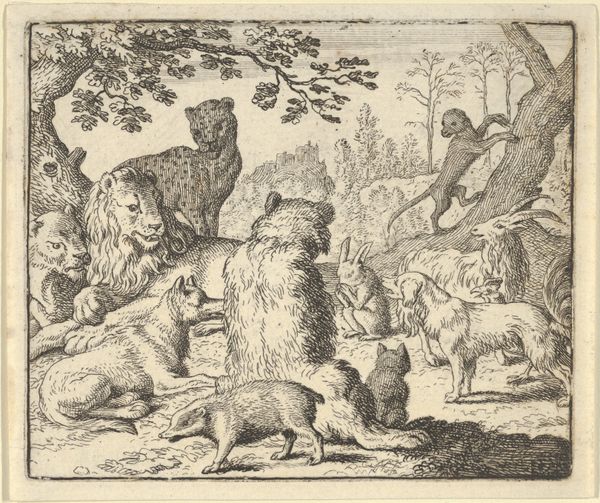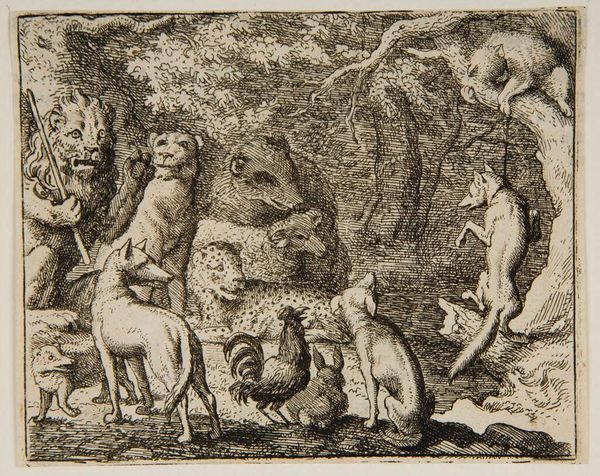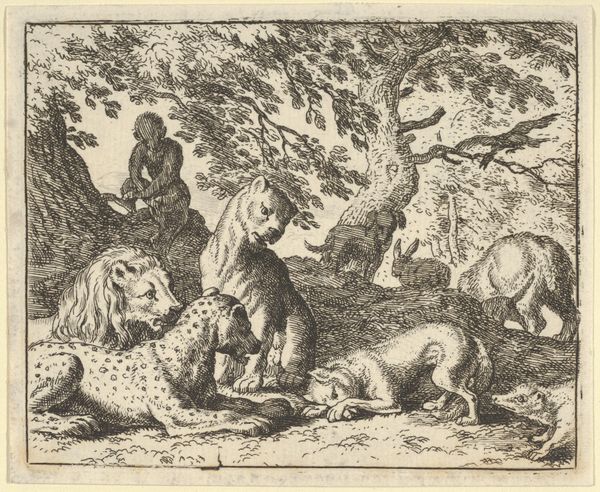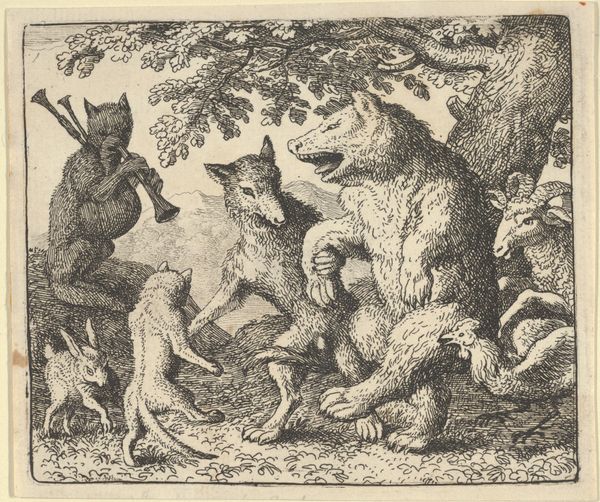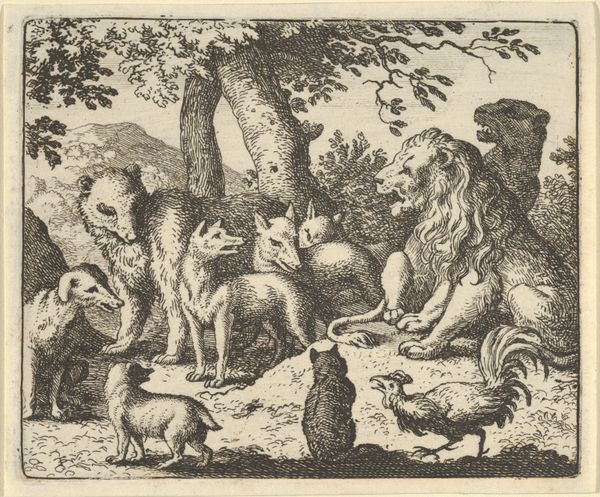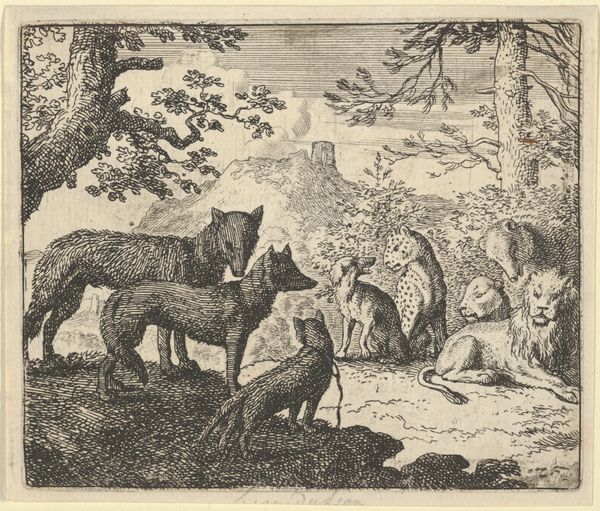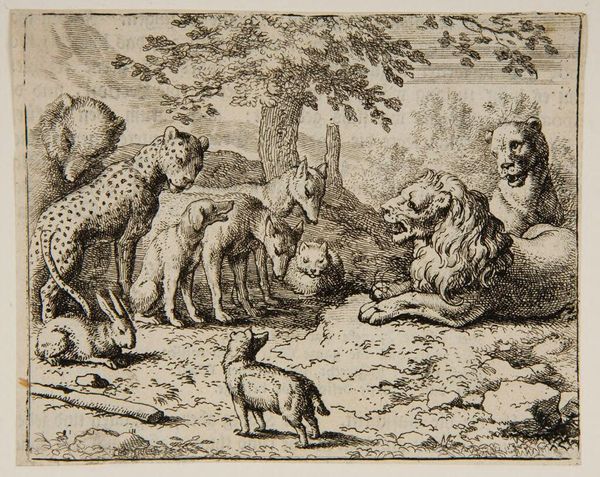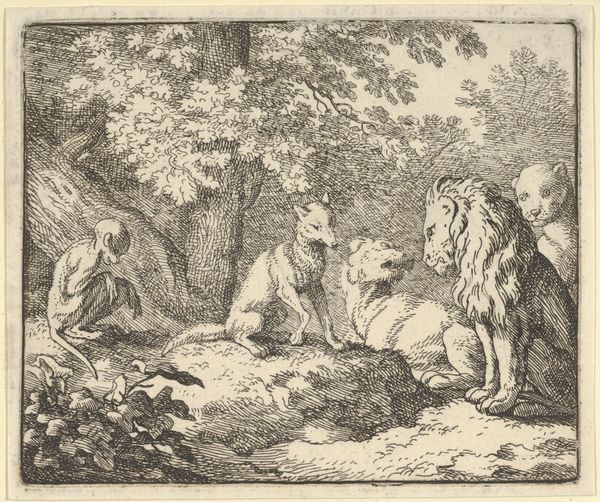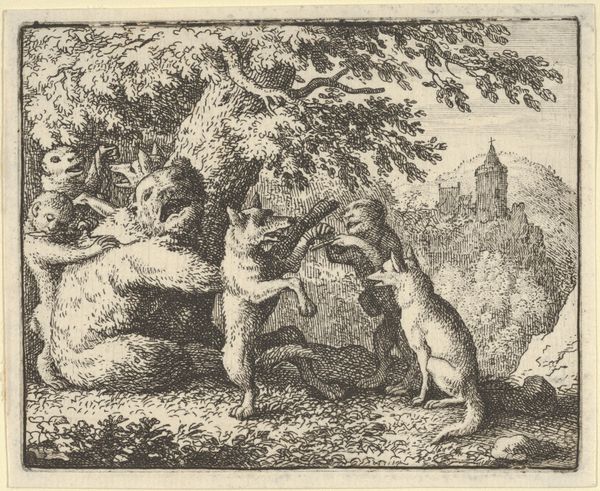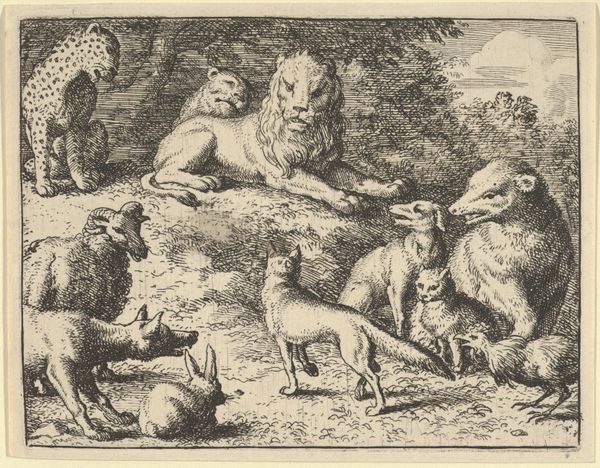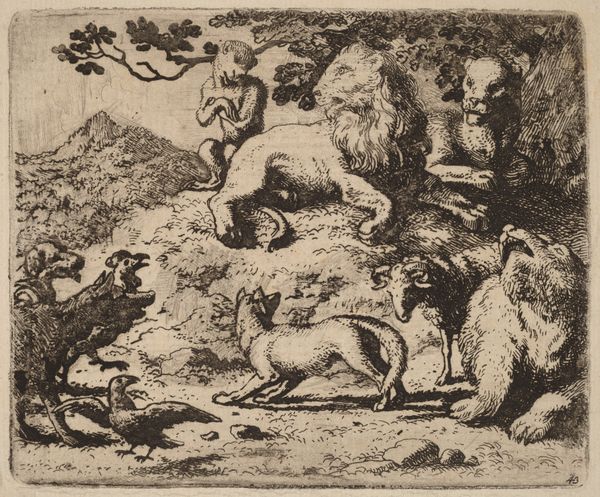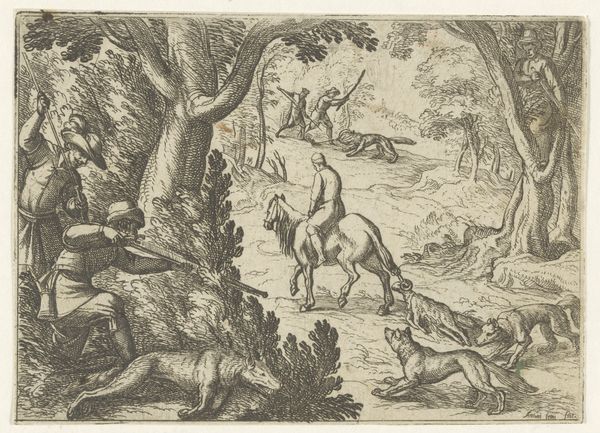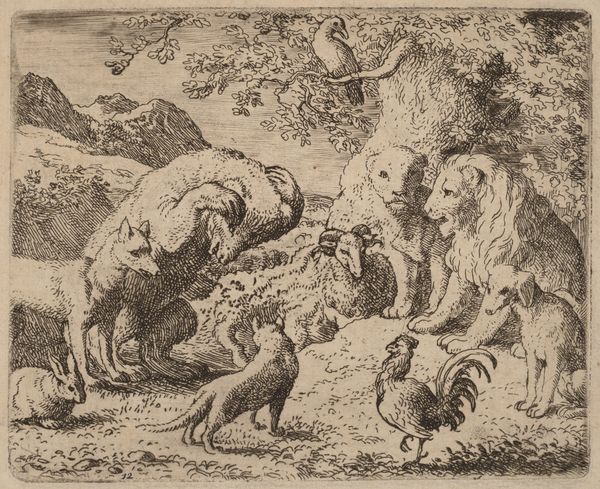
Renard Asks for Confession from Hendrick van Alcmar's Renard The Fox 1650 - 1675
0:00
0:00
drawing, print, engraving
#
drawing
#
ink drawing
#
narrative-art
#
baroque
#
pen drawing
#
mechanical pen drawing
# print
#
pen illustration
#
pen sketch
#
pencil sketch
#
old engraving style
#
pen-ink sketch
#
line
#
pen work
#
genre-painting
#
engraving
#
pencil art
Dimensions: Plate: 3 3/4 × 4 9/16 in. (9.6 × 11.6 cm) Sheet: 4 in. × 4 13/16 in. (10.1 × 12.2 cm)
Copyright: Public Domain
Curator: The flurry of densely packed figures certainly creates an immediate impression of chaos, doesn’t it? I’m struck by how unsettling the gazes of these creatures feel. Editor: I agree, the piece feels dense. Before us we have "Renard Asks for Confession from Hendrick van Alcmar's Renard The Fox," an engraving created sometime between 1650 and 1675. The piece, currently held at the Met, is attributed to Allart van Everdingen. It visualizes an episode from the popular Renard cycle. Curator: So this dense and unnerving quality we're picking up on is, in fact, intentional commentary. It speaks volumes about the corruption inherent within societal structures. It seems like these animals are trapped in a dark theater. Renard's deceit becomes symbolic of power's inherent duplicity, reflecting the exploitative systems that affect marginalized communities. Editor: Precisely! Think about the history of animal fables themselves; they were often used to critique the powerful under the guise of simple stories. By setting it as such, Van Everdingen encourages viewers to draw parallels to their own society and question those in charge. Curator: Right, and looking at the fox's posture, it’s theatrical but insincere, further highlighting the charade of morality. It seems to me like there is critique here. The engraving questions religious institutions' ability to actually provide solace or facilitate true reform, showing these animals being led by a known trickster! It pushes you to reflect on the dynamics of power and exploitation. Editor: Absolutely. And while we can focus on the engraving's message and imagery, it’s also crucial to recognize the role institutions played. The popular Renard stories spread, influencing artists such as Van Everdingen and capturing broader socio-political discourses through art and accessible narrative. Curator: I now have a more clear understanding of this piece, it stands as both an artwork but a bold challenge, urging all who look upon it to actively dismantle oppressive structures, and question even those wolves in sheeps' clothing. Editor: Indeed. Thinking about how stories like this have evolved across different cultural contexts really emphasizes art's sustained importance in reflecting society.
Comments
No comments
Be the first to comment and join the conversation on the ultimate creative platform.
